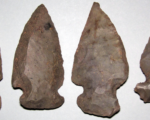Study Uncovers Genetic and Linguistic Origins of Indo-European Populations

Study Uncovers Genetic and Linguistic Origins of Indo-European Populations
A groundbreaking study led by 91 researchers, including Eske Willerslev from the Lundbeck Foundation GeoGenetics Centre at the University of Copenhagen, has provided invaluable insights into the genetic and linguistic origins of Indo-European populations. The research identifies two major migrations during the Bronze Age that helped spread steppe ancestry across the Mediterranean. These findings establish connections between modern populations in Spain, France, and Italy to Bell Beaker ancestry, while Greek and Armenian populations are linked directly to Yamnaya ancestry from the Pontic Steppe region.
Steppe Ancestry and Its Distribution Across Europe
The study, which was published on the preprint server bioRxiv, traces the distribution of steppe ancestry in Western Europe. Researchers suggest that Bell Beaker populations played a crucial role in the spread of steppe ancestry, combining their genetic profile with that of local Neolithic farmers. These findings support linguistic theories that propose a shared origin for Italo-Celtic languages. On the other hand, Greek and Armenian populations exhibit a more direct link to Yamnaya ancestry, with little to no significant local admixture. This divergence in ancestry between Eastern and Western Mediterranean populations strengthens the case for distinct linguistic groups such as Italo-Celtic and Graeco-Armenian.
Genomic and Isotope Analysis Provide Clues to Ancient Migrations
The study sequenced a total of 314 ancient genomes, ranging from 2,100 to 5,200 years ago, sourced from regions like Spain, Italy, Greece, and Turkey. In addition to genetic sequencing, 224 strontium isotope assessments were conducted to track human mobility during the Bronze Age. The results revealed that migration patterns were highly active, with non-local individuals identified in areas such as Greece, Cyprus, and Italy. This data suggests that ancient Mediterranean trade routes were more extensive than previously thought, with a particular highlight being the discovery of a Scandinavian individual in Cyprus, indicating connections between distant regions.
Implications for Our Understanding of Ancient Populations
These findings offer significant implications for our understanding of ancient population dynamics, migration patterns, and the development of languages in the Mediterranean and beyond. The genetic connections identified between modern European populations and their ancient ancestors illuminate the complex web of human movements that shaped the course of history. Furthermore, the study provides a clearer picture of how ancient migrations influenced both genetic and linguistic development in Europe, offering a deeper understanding of the Indo-European people and their widespread cultural influence.


















